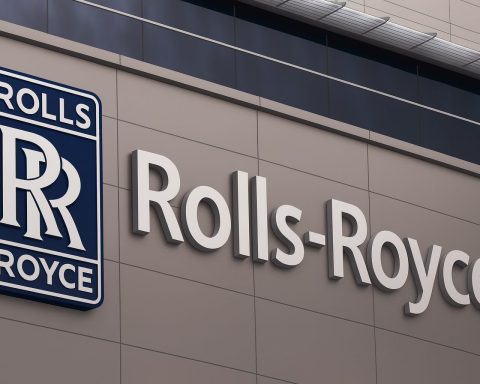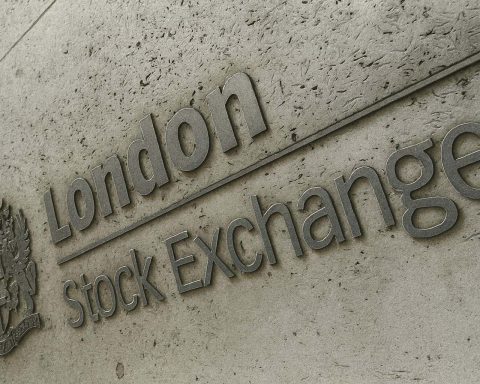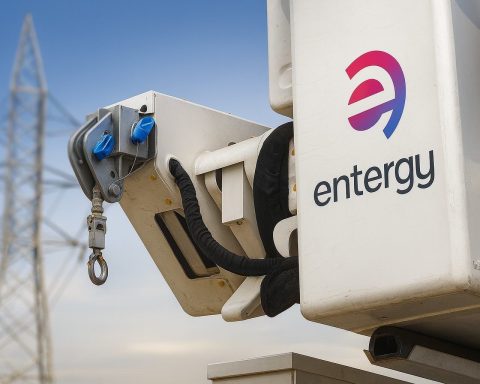Progressive Corporation’s Chief Information Officer Steven Broz has sold $307,000 in PGR stock under a 10b5‑1 trading plan, extending a year-long insider selling trend totaling about US$24 million. Here’s what the latest Form 4 filing and Progressive’s fundamentals mean for investors watching PGR.
- CIO Steven Broz sold 1,345 Progressive (NYSE:PGR) shares on November 21, 2025 at $228.29, a transaction worth roughly $307,050, disclosed in a new Form 4 and reported by several outlets including Investing.com and GuruFocus. [1]
- The sale was executed under a pre‑arranged Rule 10b5‑1 trading plan adopted on January 30, 2025, suggesting it was scheduled rather than opportunistic. [2]
- After the sale, Broz still holds 27,697.793 PGR shares, a stake worth a little over $6 million at recent prices. [3]
- Over the past 12 months, Progressive insiders have collectively sold about US$24 million of stock and recorded no purchases, with VP & CFO John Sauerland responsible for the largest single insider sale in that window. [4]
- Despite the selling, Progressive’s fundamentals remain strong: October net income more than doubled year-on-year and the combined ratio improved to 89.7, while the stock trades around 12–13x earnings and roughly 20–25% below its all‑time high. [5]
The latest trade: 1,345 shares sold for $307,050
According to the most recent SEC Form 4 filing, Steven Broz, Chief Information Officer of Progressive Corp, sold 1,345 common shares on November 21, 2025, at an average price of $228.29 per share. The transaction value comes to approximately $307,050. [6]
After this disposal, Broz’s direct ownership stands at 27,697.793 shares of Progressive. At roughly $227–228 per share, that remaining position is still worth a little over $6 million, leaving him meaningfully aligned with shareholders. [7]
In percentage terms, the sale represents about 4.6% of his personal stake — a trim, not an exit.
Executed under a 10b5‑1 trading plan
Both Investing.com and GuruFocus note that the trade was carried out under a Rule 10b5‑1 trading plan adopted on January 30, 2025. [8]
A 10b5‑1 plan allows insiders to pre‑schedule stock sales (or purchases) at times when they are not in possession of material non‑public information. Once the plan is in place, trades are executed automatically based on pre‑set instructions (for example, sell a fixed number of shares at regular intervals or within a price band). This structure:
- Provides an affirmative legal defense against allegations of trading on inside information
- Often results in regular, similarly sized trades, regardless of short‑term market news
- Makes insider activity look more mechanical and less like a sudden vote of no confidence
That fits what investors have seen from Broz in 2025.
A pattern of small, scheduled sales from the CIO
The November 21 transaction isn’t happening in isolation.
GuruFocus data show that over the past year Broz has sold a total of 9,181 Progressive shares and has not purchased any, all while his remaining stake stays sizable. [9]
Other filings and news alerts describe a string of similarly sized blocks of 1,345 shares sold earlier in the year:
- November 11, 2025: 1,345 shares sold at around $220, for proceeds of roughly $295,900 [10]
- August 22 & September 19, 2025: comparable 1,345‑share disposals at higher prices near $250–$242, as highlighted by MarketBeat and SEC data aggregators. [11]
Taken together, this looks like a disciplined de‑risking program rather than an emergency exit:
- The trade sizes are modest for a C‑suite executive at a ~$130 billion insurer
- The frequency and identical share counts are classic hallmarks of a 10b5‑1 schedule
- Broz continues to hold tens of thousands of shares, keeping material skin in the game
Beyond one executive: insiders have sold roughly US$24m of PGR stock
The bigger context is what has been happening across Progressive’s leadership team.
An in‑depth insider‑transactions analysis by Simply Wall St, syndicated on Yahoo Finance and Moomoo in early October, flagged that Progressive insiders collectively sold about US$24 million of stock over the prior 12 months, with no reported insider purchases. [12]
Key points from that analysis and related summaries:
- The largest single insider trade over the period was by VP & CFO John Sauerland, who unloaded approximately US$2.8 million worth of shares in one transaction. [13]
- Insider ownership remains around 0.3% of the company, which equates to hundreds of millions of dollars at current valuations, despite the sales. [14]
- The pattern is one‑sided: multiple insiders selling, no one buying.
GuruFocus’s insider tracker backs this up, noting 48 insider sells and zero insider buys at Progressive over the last year. [15]
To keep that in perspective, US$24 million is a tiny slice of Progressive’s roughly US$130+ billion market capitalisation — less than one‑tenth of one percent of the company’s value. [16]
Still, sustained net selling by senior leaders — even if small in absolute terms — tends to catch investors’ attention, especially when the stock has already pulled back from its highs.
How is Progressive’s business actually doing?
If you only looked at insider activity, you might assume Progressive was struggling. Recent financial results tell a more nuanced story.
October 2025 results: strong profitability
In its October 2025 monthly release, Progressive reported: [17]
- Net income of $846 million, up 107% from $408 million a year earlier
- Net premiums written of $7.00 billion, up 6% year‑on‑year
- Net premiums earned of $7.08 billion, an 11% increase vs. October 2024
- Earnings per share of about $1.44, more than double the prior‑year EPS of $0.69
- A combined ratio of 89.7, improved by 4.4 points from 94.1, indicating better underwriting profitability
Investing.com notes that Progressive’s October operating EPS of $1.36 came in ahead of some analyst estimates (for example, Goldman Sachs’ $1.31 forecast), helped by a favorable attritional loss ratio and positive prior‑year reserve development. [18]
At the same time, higher expense ratios and a prior policyholder credit expense linked to Florida auto law kept at least one firm, William Blair, somewhat cautious. [19]
Q3 2025: earnings miss but robust growth
On a quarterly basis, the picture is mixed:
- Progressive’s Q3 2025 EPS of $4.45 missed consensus expectations around $5.00–$5.05, and revenue was also slightly below forecasts. [20]
- That disappointment helped trigger a pullback in PGR’s share price earlier this autumn, contributing to the stock’s decline from record levels. [21]
Yet over longer periods, many metrics remain impressive. A recent feature highlighting the stock notes that Progressive’s trailing 12‑month EPS has grown at more than 20% annually over the past five years, outpacing its revenue growth and suggesting rising profitability per share. [22]
Where PGR trades now: valuation and Wall Street sentiment
As of the latest trading session before publication, PGR changes hands around the mid‑$220s, versus a 52‑week high of $292.99 and low of $199.90. [23]
In other words, the stock is roughly 20–25% below its all‑time high, a gap also highlighted by recent bullish commentary from The Motley Fool. [24]
From a valuation standpoint:
- GuruFocus pegs Progressive’s price‑earnings ratio at about 12.4, slightly above the property‑and‑casualty industry median near 12.1 but below the company’s own historical median. [25]
- Based on its proprietary “GF Value” metric of $257.56 per share, the site views PGR as “modestly undervalued”, with a price‑to‑GF‑Value ratio around 0.89 at the time of the CIO’s sale. [26]
A broader survey of 32 Wall Street analysts compiled by TickerNerd finds: [27]
- A median 12‑month price target of about $257, implying roughly 13% upside from current levels
- An overall “Buy‑leaning neutral” stance: 9 Buy ratings, 12 Holds and 2 Sells
- A target range stretching from $189 on the low end to $346 at the high end, with Bank of America among the more optimistic brokers
Those numbers are broadly consistent with updated analyst notes cited by Investing.com and others, where Goldman Sachs, BMO, UBS, HSBC and Bank of America have recently weighed in on Progressive’s earnings, underwriting trends and growth outlook. [28]
How should investors read Progressive’s insider selling?
Interpreting insider trades is as much art as science. A few points to keep in mind:
Why insiders sell
Executives and directors sell stock for many reasons that aren’t inherently bearish, including:
- Diversifying personal wealth away from a single employer
- Funding taxes, real‑estate purchases, or other large expenses
- Structuring rule‑driven 10b5‑1 plans to gradually reduce concentrated positions over time
All of those possibilities are at least as plausible here as a negative view on Progressive’s prospects, especially given the small size and regular cadence of Broz’s trades.
What is potentially concerning
Still, the pattern isn’t entirely irrelevant:
- A full year of net selling (US$24m) with no insider buying can suggest that management and directors don’t view the stock as a bargain at current levels. [29]
- Multiple insiders participating in sales — including the CFO — can reinforce that impression. [30]
Investors often pay the most attention when heavy insider selling coincides with deteriorating fundamentals or very rich valuations. In Progressive’s case, the backdrop is more nuanced:
- Fundamentals look strong (double‑digit premium growth, improved combined ratio, net income up over 100% year‑on‑year in October) [31]
- Valuation is reasonable to modestly cheap versus history and analyst targets
- The stock is well below its peak, not at frothy new highs [32]
That combination makes the insider selling a yellow flag rather than a red one — something to monitor closely, but not a standalone reason to panic.
What to watch next
For investors and traders following Progressive, here are a few practical things to keep on your radar:
- Future Form 4 filings
- Does Broz continue to sell 1,345‑share lots on a regular schedule?
- Do any new insiders join the selling — or finally start buying?
- Monthly results and combined ratio trends
- Progressive reports detailed monthly numbers; watch whether the combined ratio stays below 90–92 and whether premium growth holds in the high single digits. [33]
- Regulatory and legal developments
- Any further impacts from Florida auto law or similar regulatory changes could affect margins and reserve releases, as analyst notes have already pointed out. [34]
- Analyst estimate revisions
- William Blair, HSBC and others have already trimmed or tweaked EPS forecasts and price targets. Additional upgrades or downgrades in coming weeks will help signal how Wall Street digests both the Q3 miss and the strong October bounce. [35]
Quick FAQ
Who is Steven Broz at Progressive?
Steven Broz is Chief Information Officer (CIO) of Progressive Services, Inc., a key technology and operations role inside The Progressive Corporation. His responsibilities include overseeing the company’s information systems, digital capabilities and data infrastructure across personal, commercial and property lines. [36]
What exactly is a Rule 10b5‑1 trading plan?
A Rule 10b5‑1 plan is a pre‑arranged schedule that lets insiders commit to buying or selling shares at set times and/or prices. Once in place, trades execute automatically, even if the insider later has access to material non‑public information. That’s why regulators and investors typically view 10b5‑1 trades as less informative about management’s current sentiment than unscheduled, discretionary trades.
How much Progressive stock do insiders still own?
Recent analyses suggest insiders collectively own about 0.3% of Progressive, which translates into roughly US$400 million of equity at current prices — a small percentage of a mega‑cap insurer, but still a significant dollar amount. [37]
Important: This article is for informational purposes only and does not constitute investment advice or a recommendation to buy or sell any securities. Always do your own research or consult a licensed financial adviser before making investment decisions.
References
1. m.investing.com, 2. m.investing.com, 3. www.gurufocus.com, 4. finance.yahoo.com, 5. www.streetinsider.com, 6. m.investing.com, 7. www.gurufocus.com, 8. m.investing.com, 9. www.gurufocus.com, 10. www.investing.com, 11. www.stocktitan.net, 12. finance.yahoo.com, 13. www.moomoo.com, 14. finance.yahoo.com, 15. www.gurufocus.com, 16. www.gurufocus.com, 17. www.streetinsider.com, 18. m.investing.com, 19. m.investing.com, 20. www.investing.com, 21. premierstocksleague.com, 22. finviz.com, 23. finance.yahoo.com, 24. marketwirenews.com, 25. www.gurufocus.com, 26. www.gurufocus.com, 27. tickernerd.com, 28. m.investing.com, 29. finance.yahoo.com, 30. www.moomoo.com, 31. www.streetinsider.com, 32. finance.yahoo.com, 33. www.streetinsider.com, 34. m.investing.com, 35. www.investing.com, 36. www.gurufocus.com, 37. finance.yahoo.com










